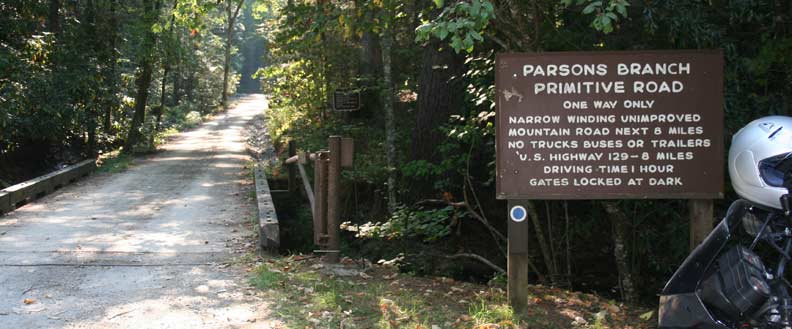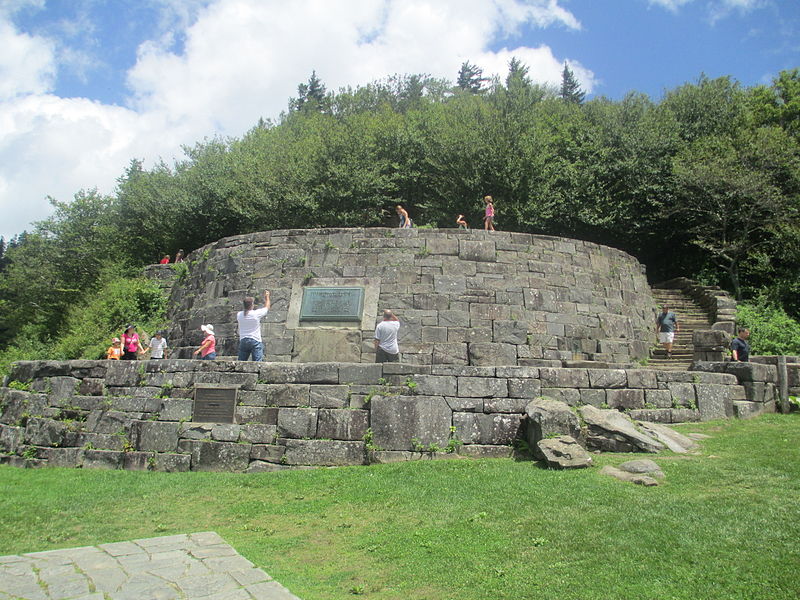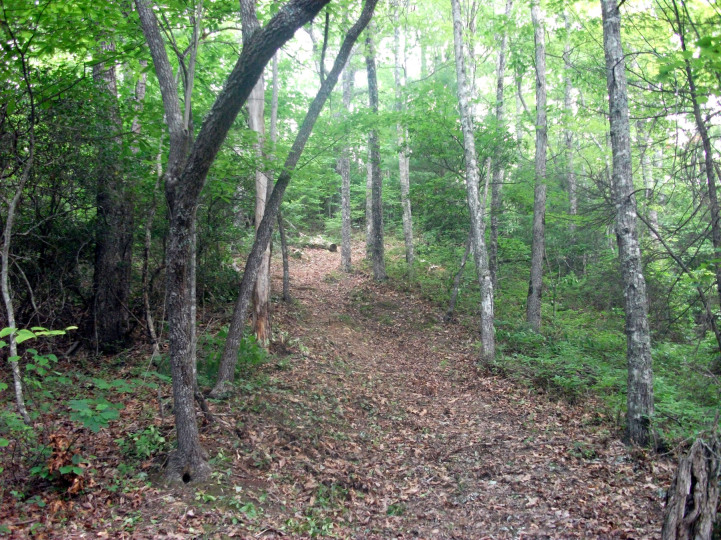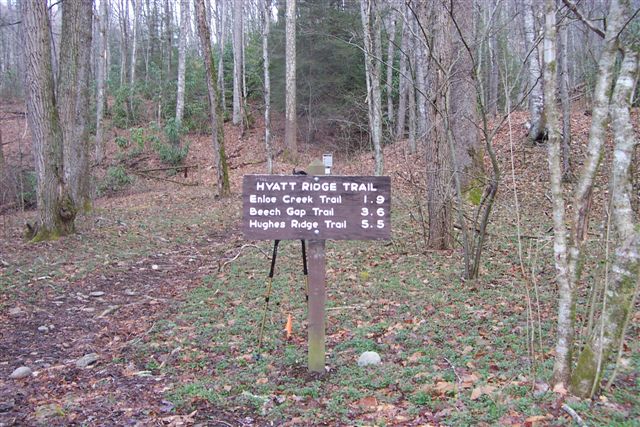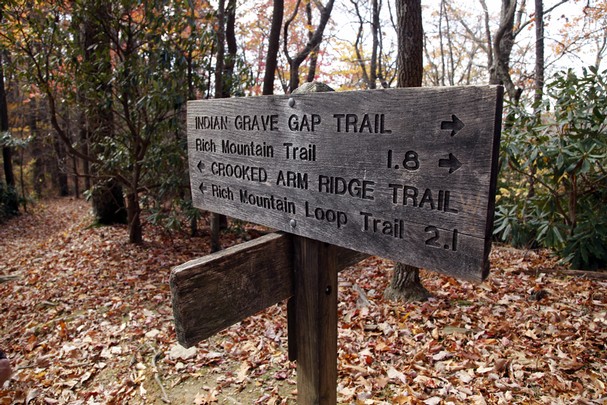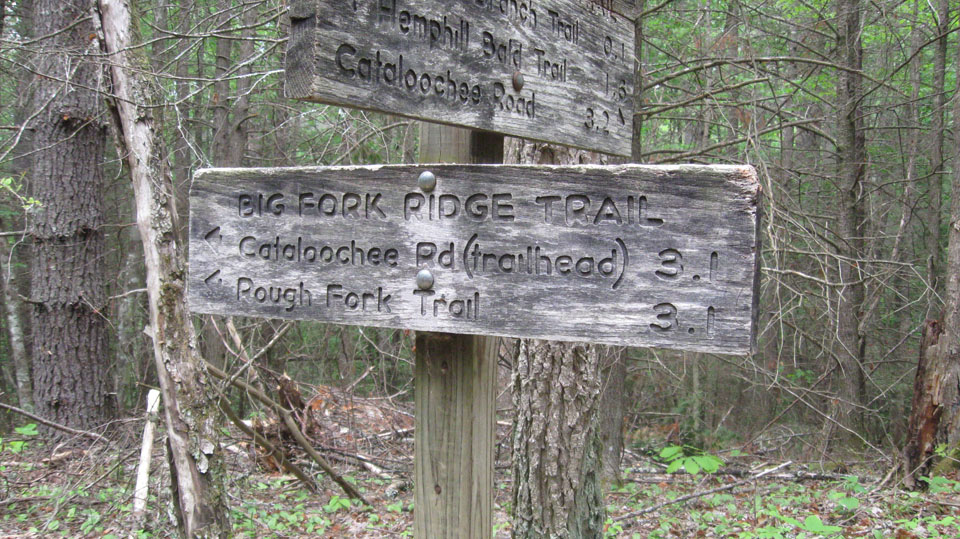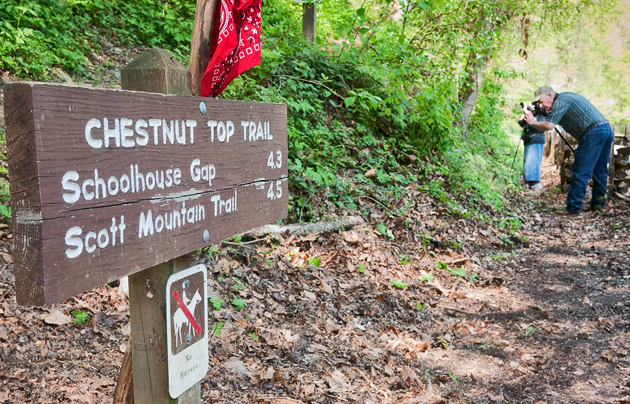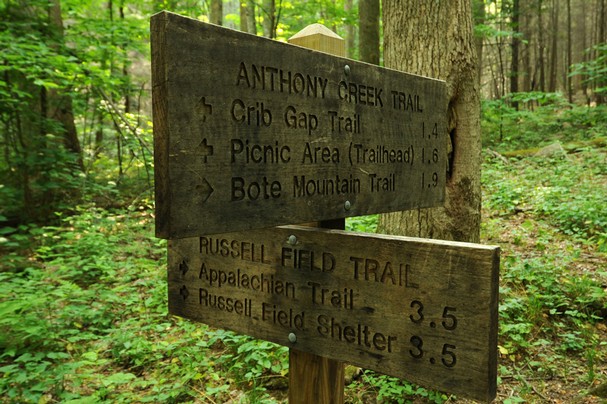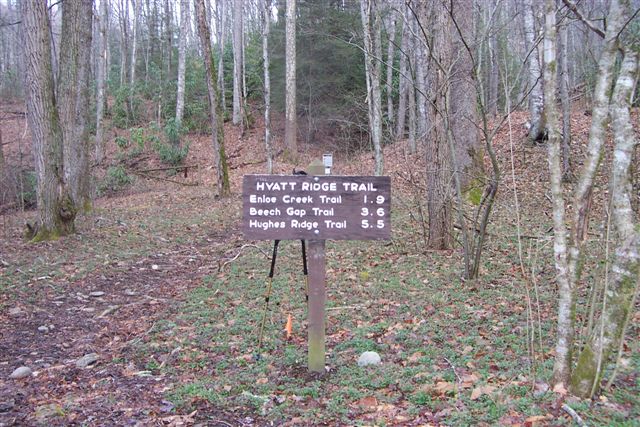Sugarlands to Oconoluftee
 The 33-mile drive from Gatlinburg, Tennessee to Cherokee, North Carolina along Newfound Gap Road (US 441) is the only route that completely traverses the Great Smokies National Park (GSMNP). The drive offers a unique opportunity to enjoy an abbreviated experience of everything the Park has to offer, without necessarily trekking far from your automobile. The drive takes about one hour, depending on traffic. The experience can take several hours if you stop at each of the suggested points of interest. June through August and the month of October are the busiest months of the tourist season, and you can spend a lot of time looking at a bumper in front of you. You shouldn’t let the congestion discourage you from the experience, however. Quiet walkways, unforgettable views of the various peaks in the Smokies, a vast variety of trees, flowers, and wildlife; campgrounds, picnic areas–they all await you on this wonderful journey.
The 33-mile drive from Gatlinburg, Tennessee to Cherokee, North Carolina along Newfound Gap Road (US 441) is the only route that completely traverses the Great Smokies National Park (GSMNP). The drive offers a unique opportunity to enjoy an abbreviated experience of everything the Park has to offer, without necessarily trekking far from your automobile. The drive takes about one hour, depending on traffic. The experience can take several hours if you stop at each of the suggested points of interest. June through August and the month of October are the busiest months of the tourist season, and you can spend a lot of time looking at a bumper in front of you. You shouldn’t let the congestion discourage you from the experience, however. Quiet walkways, unforgettable views of the various peaks in the Smokies, a vast variety of trees, flowers, and wildlife; campgrounds, picnic areas–they all await you on this wonderful journey.
Let’s begin our drive from Gatlinburg and go less than a mile to the Sugarlands Visitor Center. It’s worth the stop here to view the displays of the natural history of the Park, get an idea of what to expect on the drive, pick up reading material to accompany your trip; and ask the Park Rangers those questions you always wanted to ask. As you leave the Sugarlands Visitor Center you turn onto Newfound Gap Road. The road takes its name from a discovery in the 1850s that Indian Gap, once believed to be the lowest point through the mountains, actually was not the lowest point–hence the name Newfound Gap.
 At approximately the 1 and 2 mile points from Gatlinburg, you begin to see small signs indicating “quiet walkways”. These walkways, while you are still in Sugarlands Valley, offer wonderful opportunities to view Fall color. The valley takes its name from the multitude of sugar maples in the area. As you move away from your vehicle down these quiet paths you become surrounded by sugar maples, resplendent with color.
At approximately the 1 and 2 mile points from Gatlinburg, you begin to see small signs indicating “quiet walkways”. These walkways, while you are still in Sugarlands Valley, offer wonderful opportunities to view Fall color. The valley takes its name from the multitude of sugar maples in the area. As you move away from your vehicle down these quiet paths you become surrounded by sugar maples, resplendent with color.
As you continue along Newfound Gap Road, a little over two miles you will come upon the Campbell Overlook, which offers arguably the best vistas in the Park. Mt. LeConte rises to 6,593 feet in front of you–the third largest peak in the Smokies. The overlook is named for Carlos Campbell, who wrote Birth of A National Park (available at the Sugarlands Visitor Center). Campbell was a devoted outdoorsman and was a devout supporter for the establishment of the Great Smokies National Park.
As you continue along US 441, you approach the Chimney Tops at the 4.5 mile mark. Here you will find the Chimney Tops picnic area which is home to one of the few remaining stands of mature cove hardwoods in the U.S. The Little Pigeon River runs through the picnic area. White settlers named the Chimney Tops after stone chimneys which, if you use a little imagination, resemble the peaks. This area, and many of the higher regions of the Smokies, were once owned by paper and lumber companies, which highly prized the spruce fibers growing there for making quality paper.
At about the 7-mile point you will come upon two tunnels. They exhibit the beautiful stone work found throughout the Park–work that was accomplished in the 1930s by the Civilian Conservation Corps (CCC) established by President Franklin D. Roosevelt. The second tunnel, a switchback referred to as “the loop”, curves around and back over itself. This feature was added to alleviate the extreme slope of the mountain.
Around the 9-mile point you will find the Alum Cave Bluffs parking area and trailhead. The hike is moderately challenging. You climb 2.3 miles to the cave bluff and then continue another 2.7 miles on to LeConte Lodge. The Appalachian Trail lies not far beyond the lodge. At approximately the 13-mile point you find the Morton Overlook. From here you can look back and see the Little Pigeon River and Newfound Gap Road area you just left. To your left is Sugarland Mountain, Mount Mingus, and the Chimney Tops.
Three-quarters of a mile beyond the Morton Overlook you come to Newfound Gap itself. You are at 5,048 feet and can enjoy views to both the Tennessee and North Carolina sides of the ridge. Here you find the State Line Ridge, which serves as the spine for the entire distance of the Park, and it also comprises the sixty-nine miles of the Appalachian Trail in the Park. If you want to tell people you walked on the Appalachian Trail, you can traverse a short distance of it here before returning to your vehicle. Here you will also find the Rockefeller Memorial, which lies half in Tennessee and half in North Carolina. It memorializes the support and $5 million donated by the Rockefeller family to help establish the Park, which was dedicated here by President Franklin D. Roosevelt in 1940.
Just beyond Newfound Gap and State Line Ridge, you will come to Clingmans Dome Road, which takes you to the Clingmans Dome parking area. You hike the last half-mile and climb the 45-foot observation tower, the highest point in the Park and in Tennessee. On a clear day, it’s said you can see seven states. After you leave Clingmans Dome and continue down Newfound Gap Road toward Cherokee, you will travel approximately one-half mile to the Oconoluftee Valley Overlook, affording you spectacular views of the Oconoluftee River Valley. As you look to where the valley falls away, you can see where you will follow the road downward to Cherokee, North Carolina.
Continuing on, you will approach several quiet walkways and overlooks in the next two miles. Most notable is the Webb Overlook, named for Senator Charles Webb of North Carolina, another staunch supporter of the Park’s establishment. At the 18.5 mile point is one of the most interesting walkways–certainly in North Carolina. Shortly after entering the walkway, the trail splits. The left fork parallels the Oconoluftee River, and the right fork follows the path of the old Newfound Gap Road.
One-half mile further you approach Smokemont Campground. Once a lumber company town sustaining a school, church, store and boarding houses, it now consists of 140 campsites.
The next, and final, stop on Newfound Gap Road in the Park is the Oconoluftee Visitor Center. Here, as at the Sugarlands visitor Center, information about the Park can be obtained. A bookstore and exhibits, as well as an on-duty Park Ranger, can provide information about the Park and the people who once lived here. Next to the visitor center is the Mountain Farm Museum, which is comprised of pioneer buildings moved from throughout the Park and permanently preserved here.


